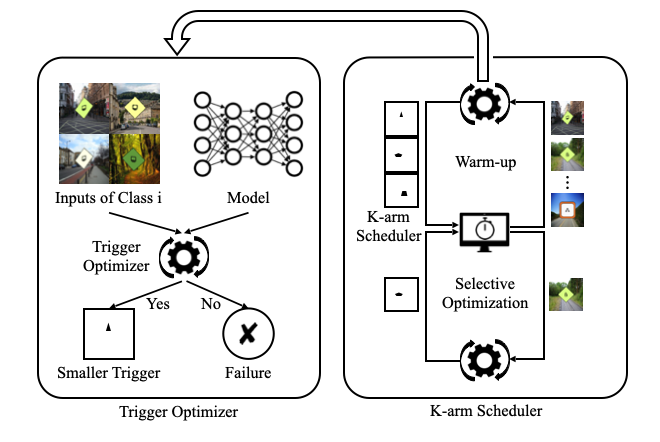Backdoor Scanning for Deep Neural Networks through K-Arm Optimization
Back-door attack poses a severe threat to deep learning systems. It injects hidden malicious behaviors to a model such that any input stamped with a special pattern can trigger such behaviors. Detecting back-door is hence of pressing need. Many existing defense techniques use optimization to generate the smallest input pattern that forces the model to misclassify a set of benign inputs injected with the pattern to a target label. However, the complexity is quadratic to the number of class labels such that they can hardly handle models with many classes. Inspired by Multi-Arm Bandit in Reinforcement Learning, we propose a K-Arm optimization method for backdoor detection. By iteratively and stochastically selecting the most promising labels for optimization with the guidance of an objective function, we substantially reduce the complexity, allowing to handle models with many classes. Moreover, by iteratively refining the selection of labels to optimize, it substantially mitigates the uncertainty in choosing the right labels, improving detection accuracy. At the time of submission, the evaluation of our method on over 4000 models in the IARPA TrojAI competition from round 1 to the latest round 4 achieves top performance on the leaderboard. Our technique also supersedes three state-of-the-art techniques in terms of accuracy and the scanning time needed.
PDF Abstract
